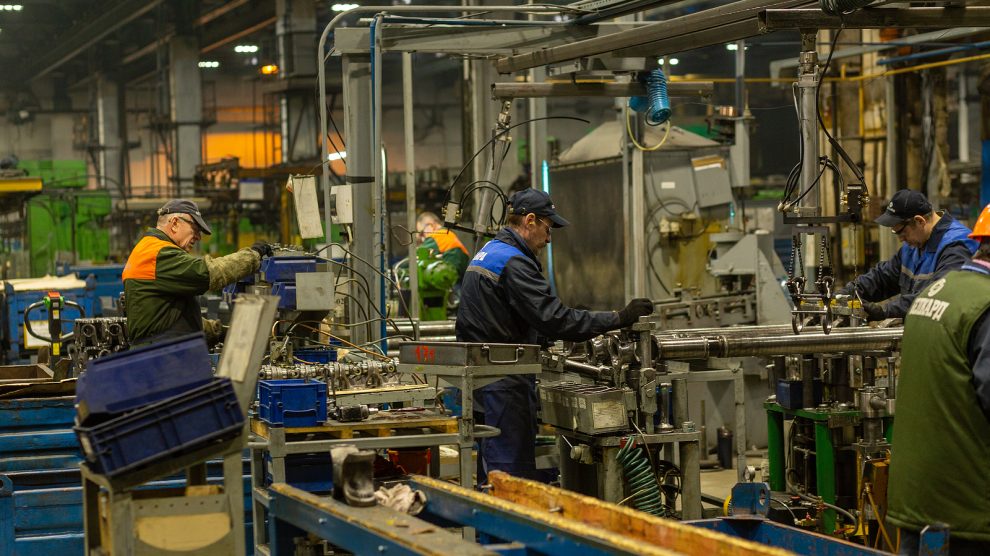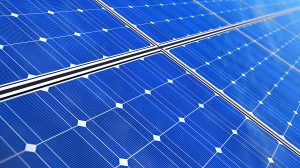The economy of Belarus has adjusted to sanctions and the loss of key export markets slightly better than expected. The future, however, is deeply uncertain.
International media coverage of Belarus, home to nine million people, focuses almost entirely on its leader, Alexander Lukashenko, his close relationship with Russian leader Vladimir Putin, and the efforts by Svetlana Tikhanovskaya and other opposition activists to transition to democracy.
Lukashenko—who has called himself the last and only dictator in Europe—has indeed defined the country’s domestic and international politics in his almost three decades in power but absent from most analyses is any mention of the country’s economy.
- In Belarus, Europe’s other dictator clings to power
- How Alexander Lukashenko could emerge as the protagonist of Europe’s next refugee crisis
- Russia, Belarus not invited to 2024 Olympic Games, but ‘neutrals’ remain
While Belarus’s Baltic neighbours to the north and Ukraine to the south pursued both political and economic liberalisation, Belarus’s economy has remains almost as centralised as its politics. Rejecting privatisation almost entirely in favour of continued state dominance, Lukashenko has prioritised high employment and generous social security programmes to maintain as much popular support as possible.
Belarus was a member of the Eurasian Economic Community (EAEC) and is a member of its successor, the Eurasian Economic Union (EAEU) single market, as well as the Commonwealth of Independent States Free Trade Area (CISFTA) and Collective Security Treaty Organisation (CSTO). It and Russia are the sole members of the Union State, which coordinates the two countries’ economies and security apparatus.
Despite its heterodox approach to post-Soviet economic transition, the Belarusian economy has performed generally well compared to its eastern European peers, with a substantially higher gross domestic product (GDP) per capita at purchasing power parity (PPP) in 2022—14,520 euros—than Ukraine (9,030 euros) and Moldova (9,860 euros) according to the Vienna Institute for International Economic Studies (wiiw).
From 1996 to 2010 Belarus experienced 15 years of uninterrupted economic growth at an average annual rate of almost seven per cent, even avoiding a fall in GDP in 2009 despite worldwide contraction.
Although a major producer of machinery, metalwork, timber, and petrochemicals, Belarus has largely failed to develop a successful hub for information and communications technologies (ICT). A nascent technology scene had begun to emerge in the years prior to a rigged presidential election in 2020, but the subsequent clampdown against civil society that followed the election (in which Lukashenko claimed to have defeated Tikhanovskaya with an improbably 80 per cent of the vote) forced many young ICT workers and entrepreneurs to flee the country.
This is reflected in the latest edition of the Emerging Europe IT Competitiveness Index, in which Belarus ranks nineteenth out of the 23 countries in the region and last in the region for business empowerment.
Belarus has a ‘RD” (Restricted Default) long term issuer default rating from Fitch due to its payment of US dollar Eurobond obligations in local currency in violation of bond terms prohibiting use of alternative currencies.
Fallout from the war in Ukraine
Lukashenko’s support for the 2022 Russian invasion of Ukraine made Belarus the target of sweeping Western sanctions targeting its petrochemical industry, production of fertilisers, banking, financial services, and transport.
Although Belarus was already the subject of Western sanctions over the government’s violent treatment of protestors in the aftermath of the 2020 presidential election, the new sanctions severely weakened its economy—contributing to its 4.7 per cent contraction in GDP—and reoriented even more trade away from Europe towards Russia and China.
“There are no publicly available statistics regarding Belarus’s trade flows at present as the authorities have imposed a curfew on reporting both the commodity composition and the direction of trade,” Dr Rumen Dobrinsky, a senior research associate at wiiw who authored its April forecast for Belarus, tells Emerging Europe. “[All we have is] just some patchy evidence based on mirror statistics and media reports.”
However, from what can be deduced, Belarus still exports timber, oil, metal, and metal products to the European Union and imports transport equipment and pharmaceuticals. However, total exports to the EU appear to have dropped by around 52 per cent in 2022 from the previous year while imports dropped by 15 per cent.
Sanctions directly affected a quarter of Belarus’s economy, and the production of one of its most important exports—potash fertiliser—fell over 50 per cent last year. Skilled professionals have left the country. As the destination for 17 per cent of Belarusian exports, Ukraine had been Belarus’s second-largest export market, but due to Minsk’s support for Moscow’s invasion, Belarus has lost almost total access to the Ukrainian market.
To maintain Minsk’s support for its war and soften the blow of Western sanctions, Russia has offered considerable economic backing—new lines of credit, highly preferential prices for oil and gas supplies, and the rescheduling of some financial obligations—and absorbed most of what Belarus used to export to Ukraine.
According to public statements by Belarusian officials, the value of Belarusian exports to Russia increased by a half in 2022 compared to the previous year and the export of agricultural products rose by 70 per cent.
Belarus has sought to replace Western imports of technology and equipment with those from China, and Belarusian exports of potash fertiliser, timber, and food products to China are believed to have increased significantly last year.
The total value of Belarusian exports to China reportedly rose 56 per cent last year, and China became Belarus’s second-largest trade partner after Russia. Belarus has applied to join the Shanghai Cooperation Organisation (SCO) and is expected to have completed its accession process by the organisation’s 2024 summit.
Previous Chinese Belt and Road Initiative (BRI) investment in Belarus envisioned the country as part of a “new Eurasian land bridge” of railway and other trade infrastructure connecting China to Europe, post-invasion geopolitics have neutered much of its strategic importance to that project.

Outlook for the future
“By all accounts, in 2023 Belarus’s economy has performed considerably better than had been expected by most analysts,” says Dr Dobrinsky. “GDP grew by two per cent year-on-year in the first half of 2023 and the recovery continues to gain speed: GDP growth for the year as a whole is expected to reach three per cent or even more. Although these outcomes represent a recovery from a very low base caused by the effects of the sanctions in 2022, performance in 2023 indicates a considerable degree of adjustment to the new hostile economic environment.”
Dr Dobrinsky cited Russia’s further opening to Belarusian products previously exported to Western markets and facilitation of new trade corridors for the export of Belarusian products to other markets—as well as the Belarusian government’s continued policy of fiscal stimulus to the business sector—as contributing to this adjustment.
However, with the prospect of economic integration with European neighbours off the table for the foreseeable future, the outlook for long-term growth is uncertain at best.
Unlike many news and information platforms, Emerging Europe is free to read, and always will be. There is no paywall here. We are independent, not affiliated with nor representing any political party or business organisation. We want the very best for emerging Europe, nothing more, nothing less. Your support will help us continue to spread the word about this amazing region.
You can contribute here. Thank you.







Add Comment